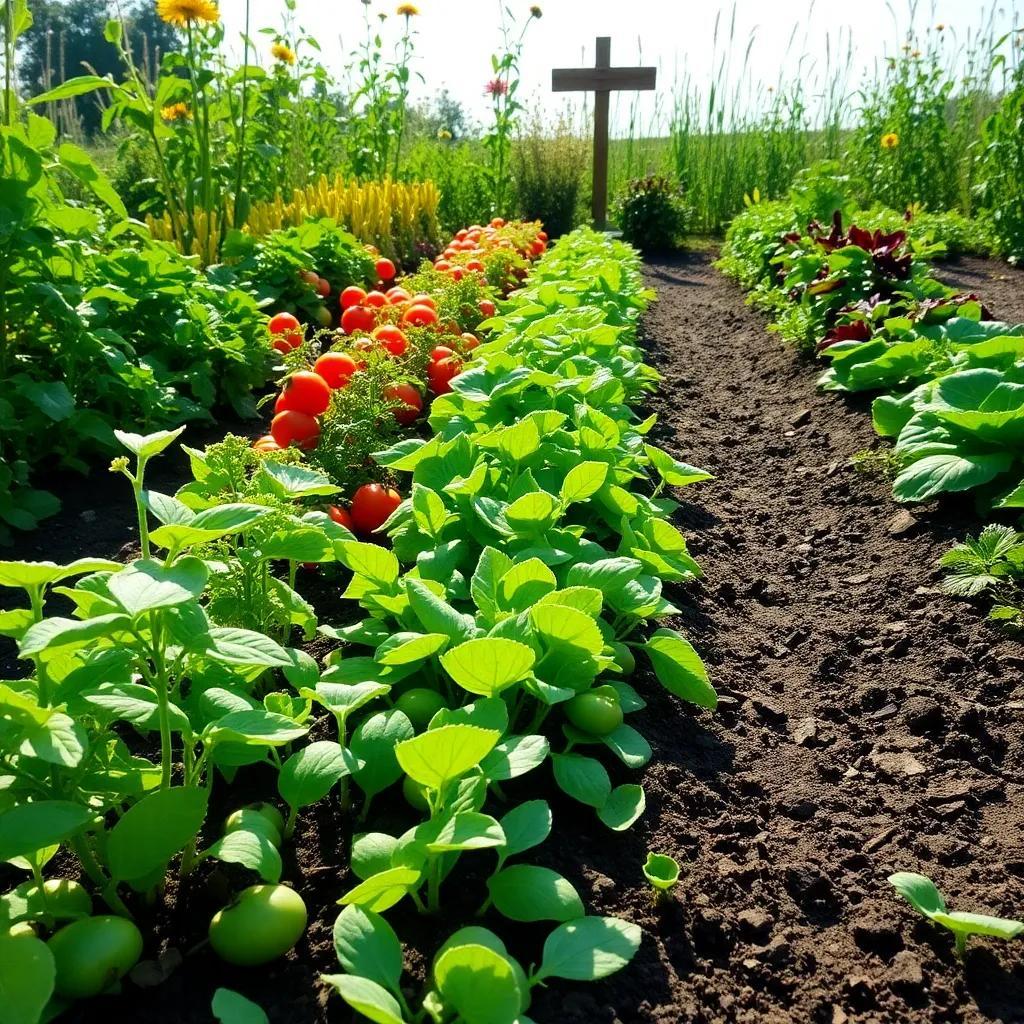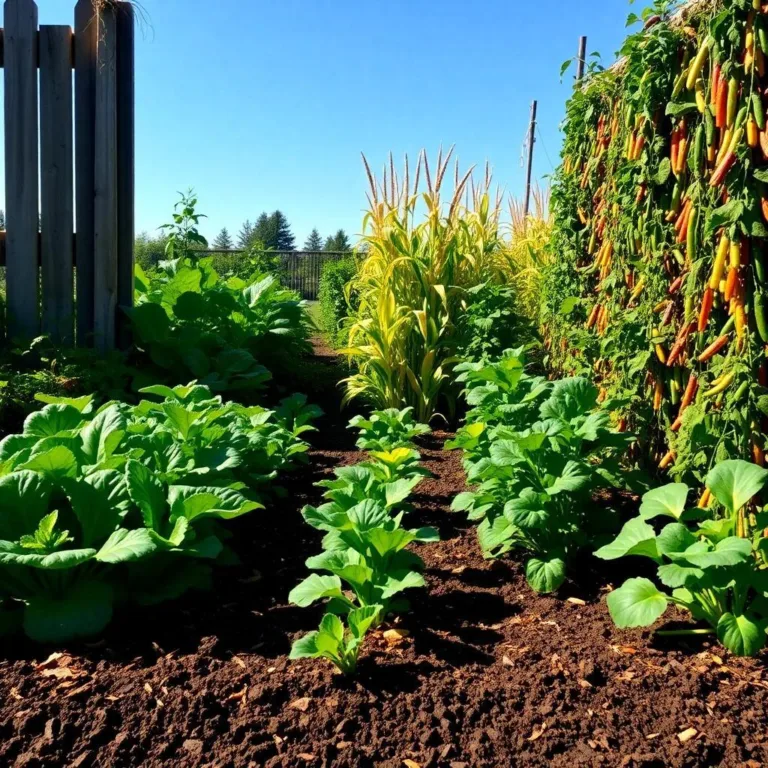Are you ready to discover the secrets of a thriving garden? Crop rotation is like giving your plants a little dance party, mixing up their neighbors to keep things lively and healthy! Join me as we explore the fun and benefits of rotating crops, along with some easy methods and practical examples to help your garden flourish!
Understanding the Basics of Crop Rotation
Hey there, fellow gardening enthusiast! Have you ever wondered why farmers plant different crops in a field each year? That’s where crop rotation comes in! This farming practice is all about growing different types of crops on the same land over several seasons. It’s a simple concept, but it has some pretty amazing benefits for both plants and soil!
So, what’s the big idea behind crop rotation? Well, every plant has unique needs and characteristics. Some crops take nutrients from the soil, while others can replenish those nutrients. For example, legumes like beans and peas are fantastic at fixing nitrogen in the soil, making it richer for other plants to thrive! When you rotate your crops, you create a mini-ecosystem in your garden that helps maintain healthy soil.
Here are a few basics that make crop rotation so effective:
- Nutrient Management: Different crops have different nutrient needs. By rotating crops, the soil can balance nutrient levels, keeping it fertile.
- Pest Control: Pests often stick to their favorite crops. Changing plants around makes it harder for pests to settle in and multiply!
- Disease Prevention: Similar to pests, certain diseases prefer specific plants. Rotating crops can disrupt these cycles and keep plants healthier.
In short, crop rotation is like a fun game of musical chairs for plants! It keeps the garden lively and thriving while preventing problems like pest infestations and nutrient depletion. So, the next time you plan your garden, remember that mixing it up can lead to bountiful harvests and healthier plants!
Benefits of Implementing Crop Rotation
Now that we’ve got the basics down, let’s explore the fantastic benefits of crop rotation! Trust me, once you understand these perks, you’ll want to get your hands dirty in the soil and start planning your crop rotation strategy!
- Improved Soil Fertility: As I mentioned earlier, different plants contribute different nutrients to the soil. By switching crops, you can maintain and even improve the soil’s health over time. Your plants will thank you for it!
- Natural Pest Management: It’s like having a built-in bodyguard for your garden! Crop rotation helps break the life cycles of pests. When their favorite food isn’t around, they’ll have to look elsewhere, making it easier for you to manage any pest problems!
- Higher Yields: Who doesn’t want more veggies? Crop rotation often leads to better yields. When plants are healthy and happy, they tend to produce more delicious crops!
- Reduced Weeds: Regularly changing up what you plant can keep weeds at bay. Some crops grow so quickly or densely that they outcompete weeds for resources. Less weeding means more time to enjoy your garden!
- Sustainable Practice: Crop rotation is an eco-friendly approach, reducing the need for chemical fertilizers and pesticides. It promotes a healthier ecosystem and contributes to sustainable farming.
By implementing crop rotation, you not only nurture your garden but also help the environment! So, are you ready to give it a try? Your plants will flourish, and you’ll have a thriving garden to show off! Happy gardening!

Methods and Techniques for Effective Rotation
Alright, my gardening friends! Now that we’re excited about crop rotation, let’s chat about some methods and techniques that can make this process easy-peasy! Implementing crop rotation doesn’t have to be overwhelming. In fact, with a little planning and creativity, we can create a fun and effective rotation system for our gardens!
Here are some handy tips to get started:
- Plan Your Crops: Before you plant, create a rotation plan. I like to jot down the crops I want to grow, organizing them based on their nutrient needs. Grouping plants helps balance soil health and minimizes pest problems.
- Use Crop Families: Different crops belong to various plant families. Knowing these family ties helps in deciding what to plant next. For instance, after growing tomatoes (a nightshade), it’s best to follow with legumes like beans or peas. This rotation helps break pest cycles!
- Keep it Simple: Start with a two-way rotation or three-way rotation. For example:
– Year 1: Tomatoes ➔ Year 2: Beans
– Year 1: Corn ➔ Year 2: Squash ➔ Year 3: Peas
- Add Cover Crops: Don’t forget about cover crops! These are planted during the off-season and can improve soil health. They help with erosion, add nutrients, and even attract beneficial insects!
- Monitor and Adjust: After each growing season, take note of what worked well and what didn’t. Feel free to tweak your rotation plan based on these observations. It’s all about finding what suits your garden best!
With these methods in your gardening arsenal, you’ll be set for success. Remember, it’s all about experimenting and having fun!
Common Challenges in Crop Rotation
Even though crop rotation is fabulous, it’s not without its challenges. Don’t worry, though! I’m here to share some common bumps in the road and how to tackle them like a pro!
- Pest Adaptation: Pests can be tricky little critters. Sometimes they adapt to rotating crops. If you notice that pests are still sticking around, consider using additional pest control methods like natural predators or organic repellents.
- Market Pressures: Sometimes, the market demands specific crops, which can make it tough to stick to a rotation plan. If everyone wants tomatoes right now, it can be tempting to plant them year after year. Just remember, diversifying your crops can help keep your garden healthy!
- Weather Woes: Unpredictable weather can throw a wrench in your plans. Droughts or heavy rains may affect crop yields and soil health. Grow resilient plants and have backup plans for irrigation or drainage to keep your garden thriving!
- Limited Space: If you’re gardening in a small area, crop rotation might seem tough. No worries! You can still rotate by using containers or raised beds. Just make sure to note what’s planted where!
- Management Efforts: Crop rotation requires planning and a bit of extra effort. Don’t let this discourage you! Use a calendar or gardening app to help keep track of your rotation schedule. A little organization goes a long way!
Every challenge has a solution, and with patience and creativity, you can tackle them one by one. Keep your spirits up, and soon you’ll see the rewards of your hard work!
Practical Examples of Crop Rotation Systems
Now that we’ve discussed methods and challenges, let’s dive into some practical examples of crop rotation systems! Seeing how others do it can spark some ideas for your own garden!
- Three-Year Rotation: This is a classic! For example:
– Year 1: Corn (a heavy feeder)
– Year 2: Beans (fix nitrogen)
– Year 3: Wheat (light feeder)
This cycle helps manage soil nutrients and reduces pest issues!
- Legume-Heavy Rotation: If you love beans, consider:
– Year 1: Soybeans
– Year 2: Tomatoes
– Year 3: Carrots
Adding legumes helps boost soil fertility and prepares it for nutrient-loving crops like tomatoes!
- Cover Crop Rotation: During off-seasons, include cover crops:
– Fall: Rye or clover to protect the soil and prevent erosion.
– Spring: Till in the cover crop to add nutrients before planting summer vegetables.
- Integrated Crop-Livestock Rotation: If you have livestock, consider mixing crops with grazing:
– Year 1: Corn ➔ Cattle graze on leftover stalks.
– Year 2: Soybeans ➔ Chickens can help manage pests!
- Fallow Rotation: Sometimes, you need to let the land rest! For example:
– Year 1: Potatoes
– Year 2: Fallow (leave the land uncultivated to regenerate soil health).
These examples highlight the flexibility of crop rotation systems, so feel free to mix and match based on your own gardening goals! By getting creative and observing what works best for your garden, you’ll be on your way to cultivating a colorful, vibrant, and productive space! Happy gardening!

